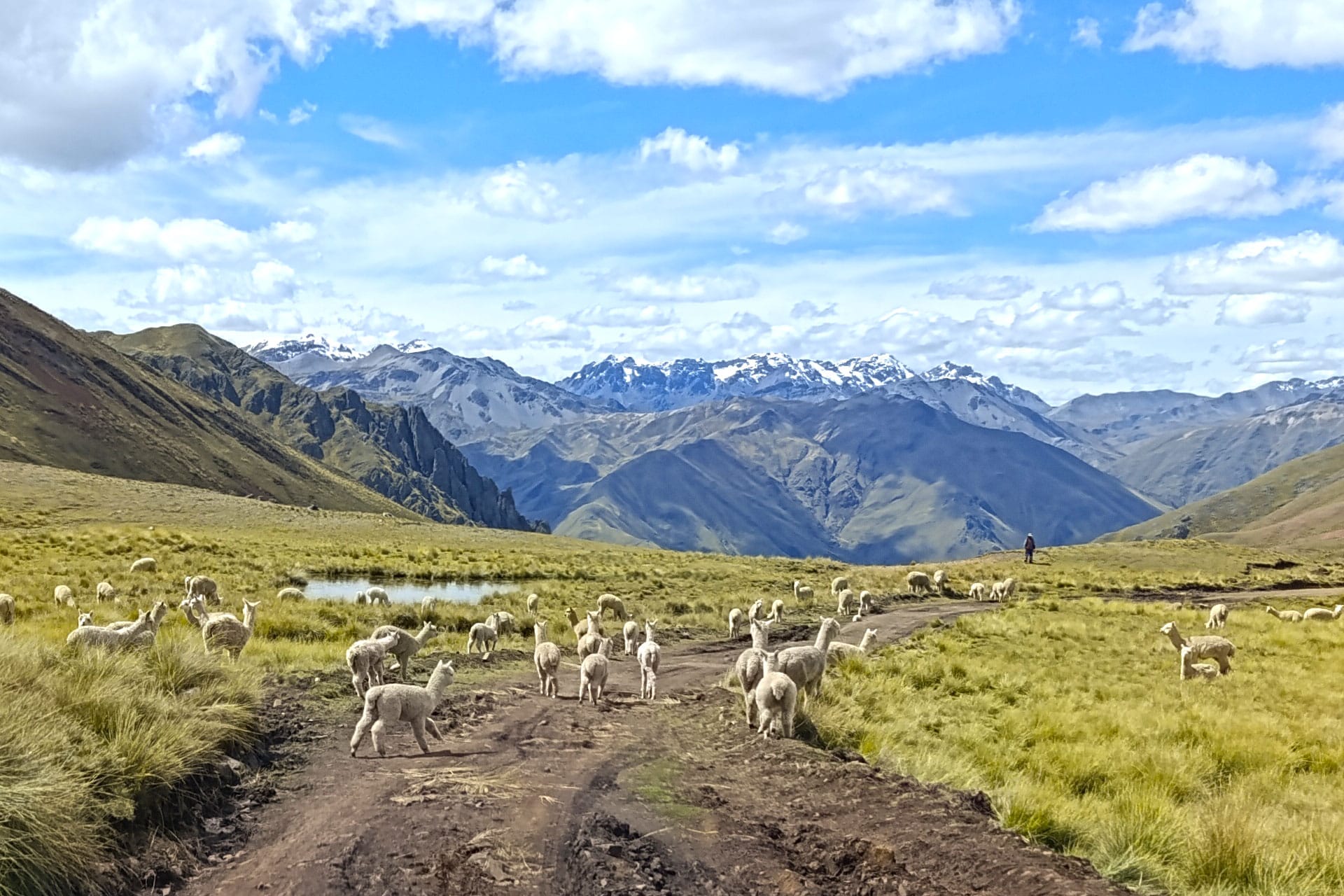Planning a trip to Pallay Punchu? Timing can make or break your experience. Weather, crowd levels, and visibility change dramatically throughout the year. In this guide, we’ll walk you through each season, month-by-month advice, and expert packing tips to ensure you experience the mountain at its best.

Why Timing Matters
- Visibility: Clear skies reveal vivid colors; rainy season brings clouds and haze.
- Trail Conditions: Mud and slippery slopes in wet months can make trekking risky.
- Crowds: Although always quieter than Rainbow Mountain, visitor numbers peak in dry months.
- Temperatures: High-altitude thermals change daily—layers are essential.
Season-by-Season Overview
December – March: Rainy Season
Expect daily afternoon showers, muddy roads, and low visibility from clouds. The trails become slippery, and vehicle access can be disrupted.
Verdict: Avoid unless you’re prepared for adventure—and rain.
April – May: Start of the Dry Season
Skies clear up, temperatures hover between 5 °C–15 °C (41–59 °F). Soil dries and trails firm up.
Verdict: A great time for sharp ridges and vibrant colors with mild crowds.
June – August: Peak Dry Season
Crystal-clear skies, chilly mornings (−5 °C to 5 °C / 23–41 °F), frozen ground that thaws by midday.
Verdict: Best visuals, a few crowds, but evening and early morning cold is real.
September – November: End of Dry Season
Temps gradually warm, but early frost may persist. Dust on trails is minimal and skies remain clear.
Verdict: Ideal mix of comfort, visuals, and manageable crowds.

Month-by-Month Quick Guide
- December–January: High rainfall—avoid.
- February–March: Still wet; sporadic clear days.
- April–May: Transition to dry; excellent visibility.
- June–August: Peak color, steady dry weather.
- September–October: Clear skies, warmer days.
- November: Early rains may begin—watch forecast.
Crowds & Tours
Pallay Punchu never sees the mass tourism of Rainbow Mountain, but dry months bring more visitors. April–May and September–October have moderate numbers, while June–August see higher—but still small—groups.
For solitude seekers, consider late September or early May. For reliable weather and vibrant colors, aim for June or July and book early to secure your spot.
Check current tour availability for Pallay Punchu
Weather & What to Pack
- Layered clothing for temps from -5 °C to 15 °C (23–59 °F).
- Waterproof jacket if traveling in wet season.
- Sunglasses, high SPF sunscreen—UV is intense at altitude.
- Gloves, wool hat, thermal base layers, sturdy boots.
- Water and snacks—trailside facilities are minimal.
Frequently Asked Questions
- When is Pallay Punchu most colorful? June–August, due to bright sun and clear skies.
- Can I visit in rainy season? Technically yes, but expect rain, mud, and limited views.
- Are tours available year-round? Most operators run from March to November; logistics reduce in heavy rains.
- Do I need to acclimate first? Always—stay in Cusco for at least 2–3 days before trekking.
- Does crowd level matter? Crowds remain low compared to other attractions; timing just improves comfort and access.
Best Time Summary
If you want stunning visuals and reliable hiking conditions, target June to August. For fewer visitors with still excellent weather, go for April–May or September–October.
Plan Your Pallay Punchu Visit
Now that you know when to go, pair your timing with smart packing and a trusted tour for a flawless experience:
- **Dry season (April–November):** Perfect for trekking and views.
- **Stay 2–3 days in Cusco** to acclimatize.
- **Book early** if traveling June–August.
- **Pack layers, sunscreen, and altitude meds.**
Explore Pallay Punchu tours based on season | Contact us to create your ideal seasonal itinerary

Comments